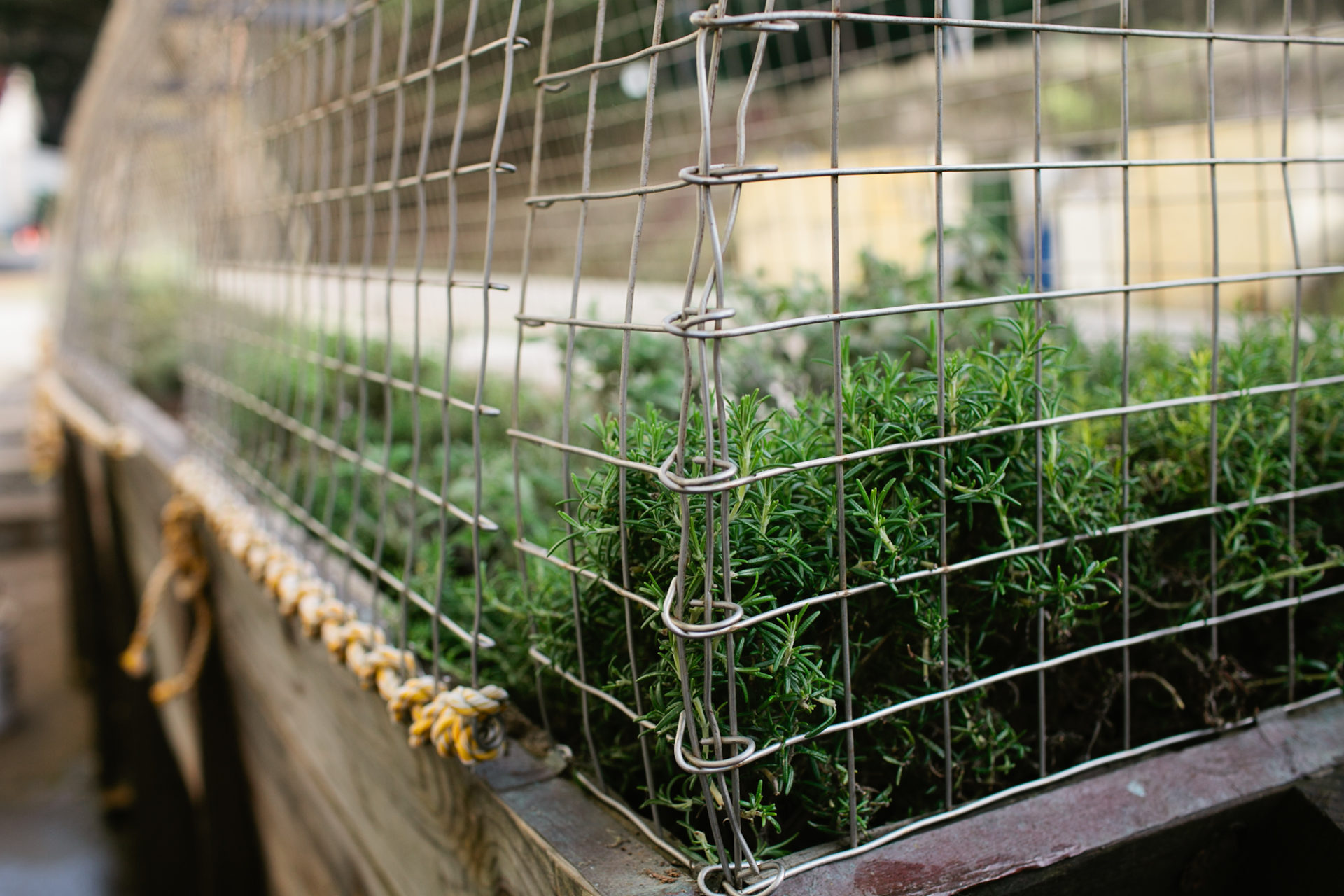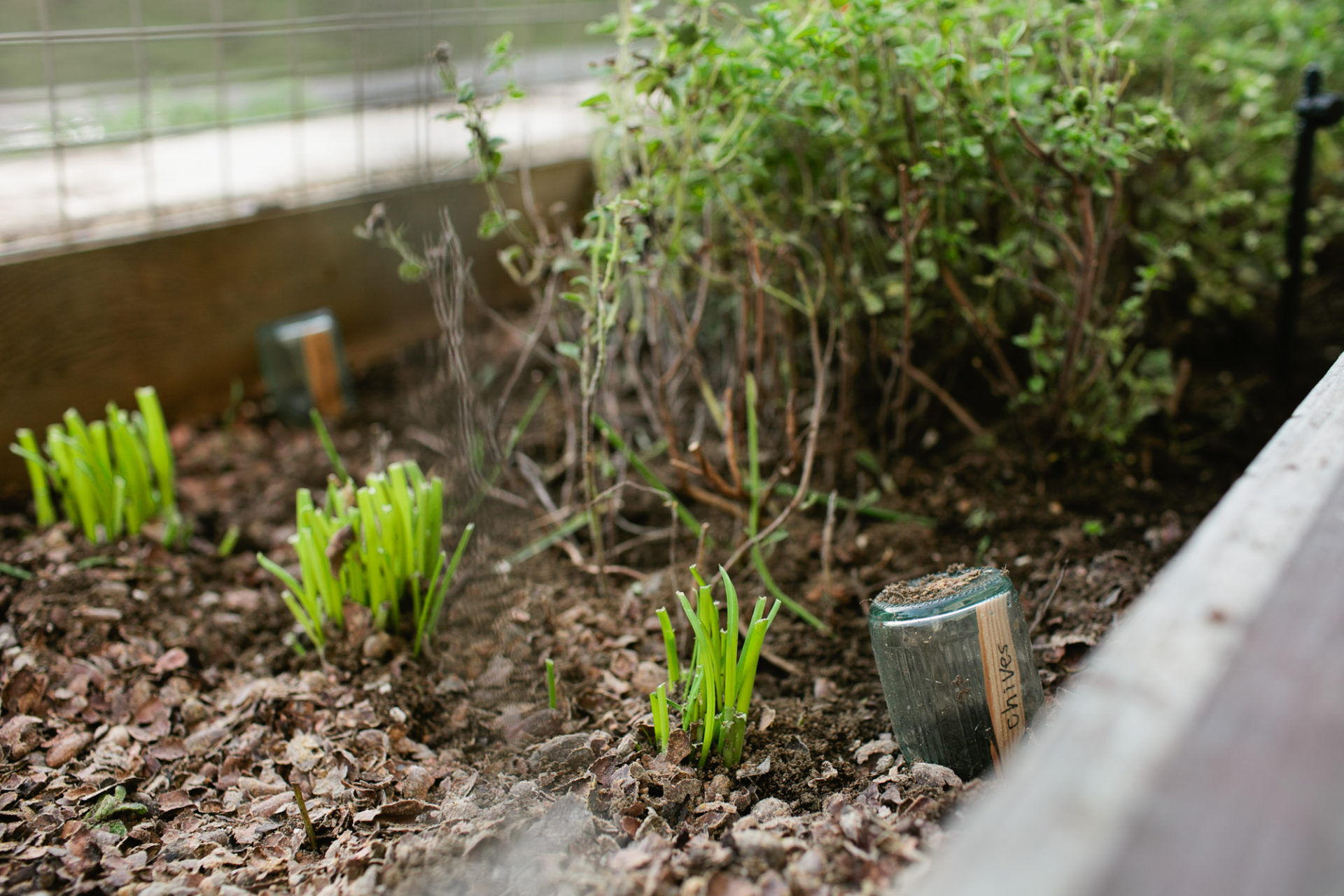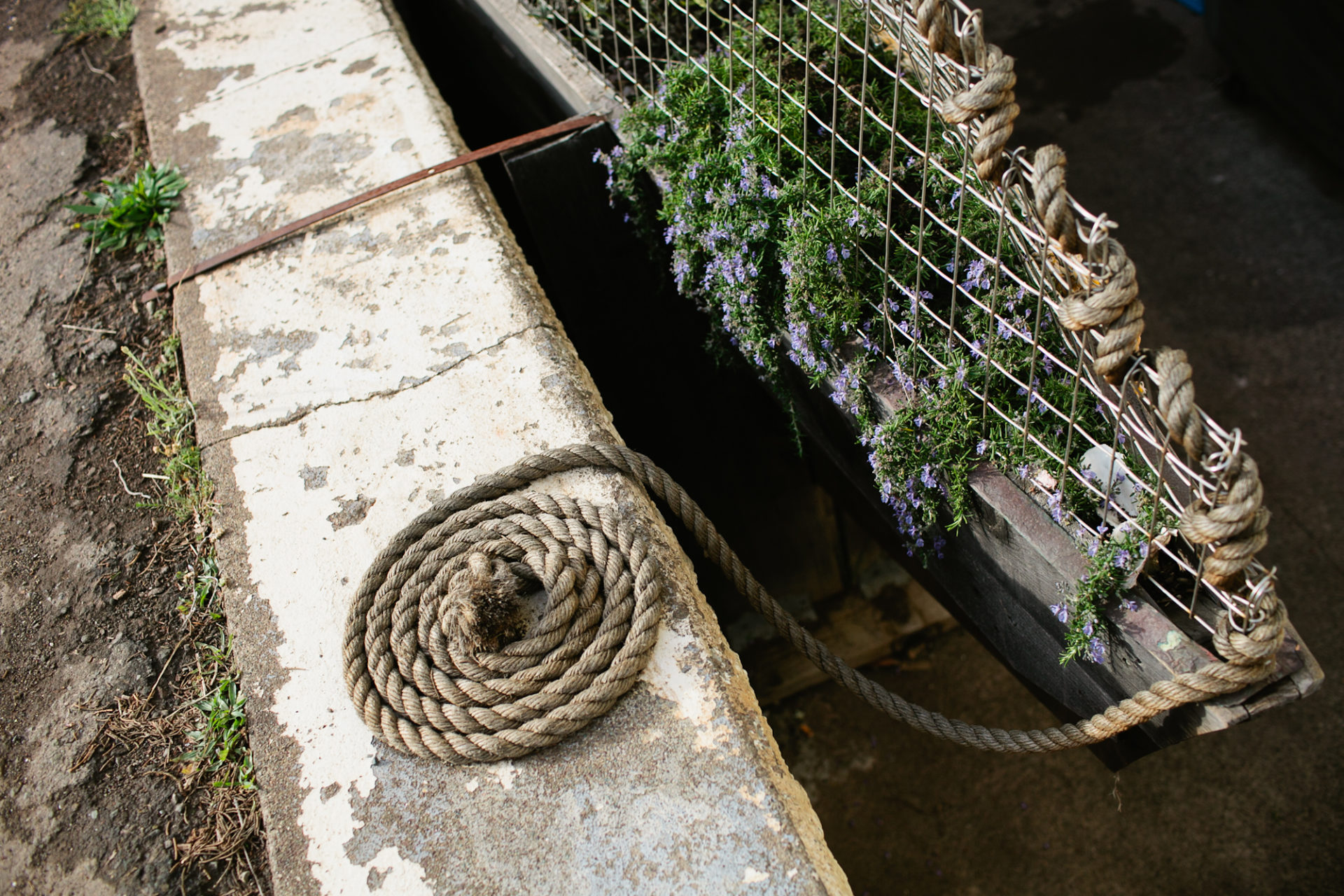Reverse Ark Victory Garden
In 2008, Headlands commissioned artists Amy Franceschini (AIR ’03) and Michael Swaine (AIR ’03) to create Reverse Ark, Headlands’ Victory Garden, a site-specific Victory Garden outside the Mess Hall. The garden, featuring herbs used in Headlands’ kitchen, represents a long tradition of artist-driven, site-specific interventions.
The Victory Garden at Headlands is part of a larger collaborative project by Franceschini and Swaine, Victory Gardens 2007+. For this particular project Franceschini and Swaine took inspiration from the writings of Cooley Windsor (AIR ’00), creating the above ground garden in the shape of an ark.
Victory gardens were vegetable, fruit, and herb gardens planted at private residences in Canada, the United States, and the United Kingdom during World Wars I and II to reduce pressure on the public food supply. In addition to aiding the war effort, these gardens were considered civil morale boosters in that gardeners could feel empowered by their labor and rewarded by the produce grown.
Victory Gardens 2007+ calls for a more active role for cities in shaping agricultural and food policy. It is a concept currently in development with the City of San Francisco that would provide a subsidized home gardening program for individuals and neighborhoods. The program offers tools, training, and materials for urban dwellers to participate in a citywide transformation of underutilized backyards—turning them into productive growing spaces.
Victory Gardens 2007+ (VG2007+) is a concept currently being developed with the intention of being adopted by the City of San Francisco’s Recreation and Park Department. The program is a two-year pilot project that supports the transition of backyard, front yard, window boxes, rooftops, and unused land into food production areas. VG2007+ has the mission and supporting a citywide network of urban farmers by (1) growing, distributing, and supporting starter kits for home gardeners; (2) educating through lessons, exhibitions ,and web sites; and (3) starting and maintaining a city seed bank.




